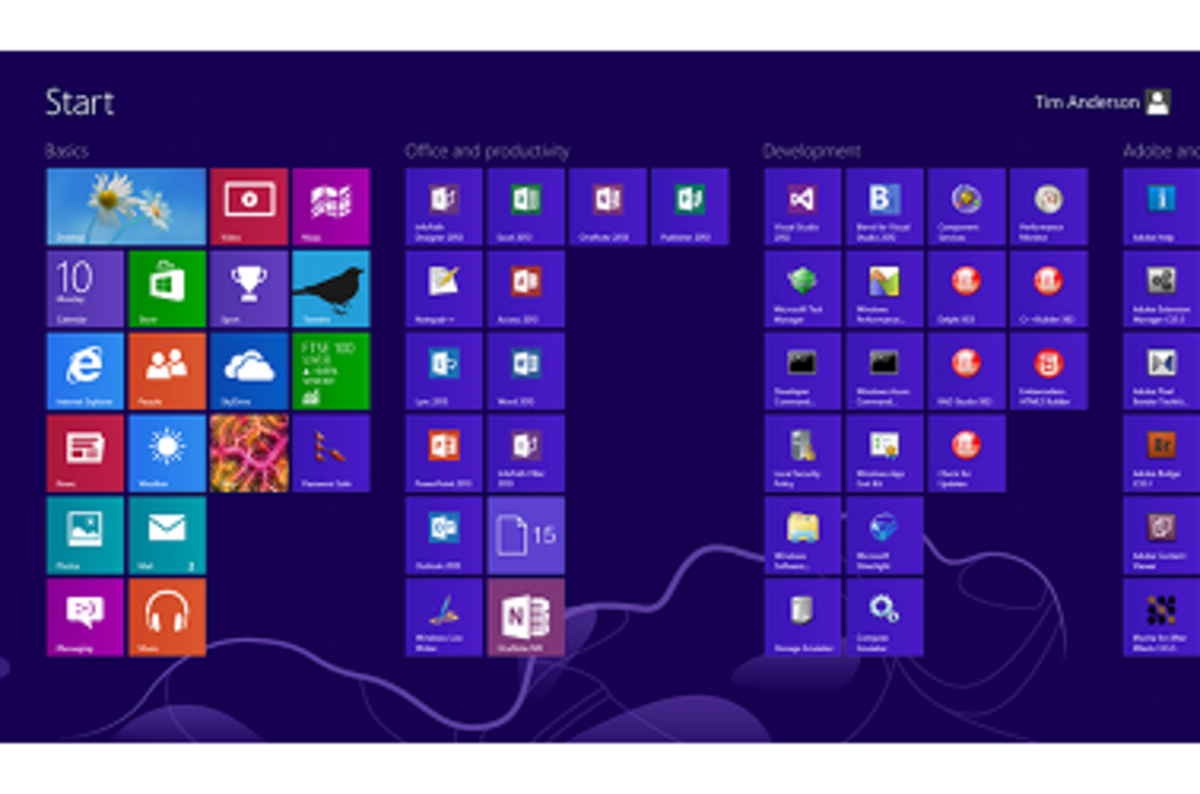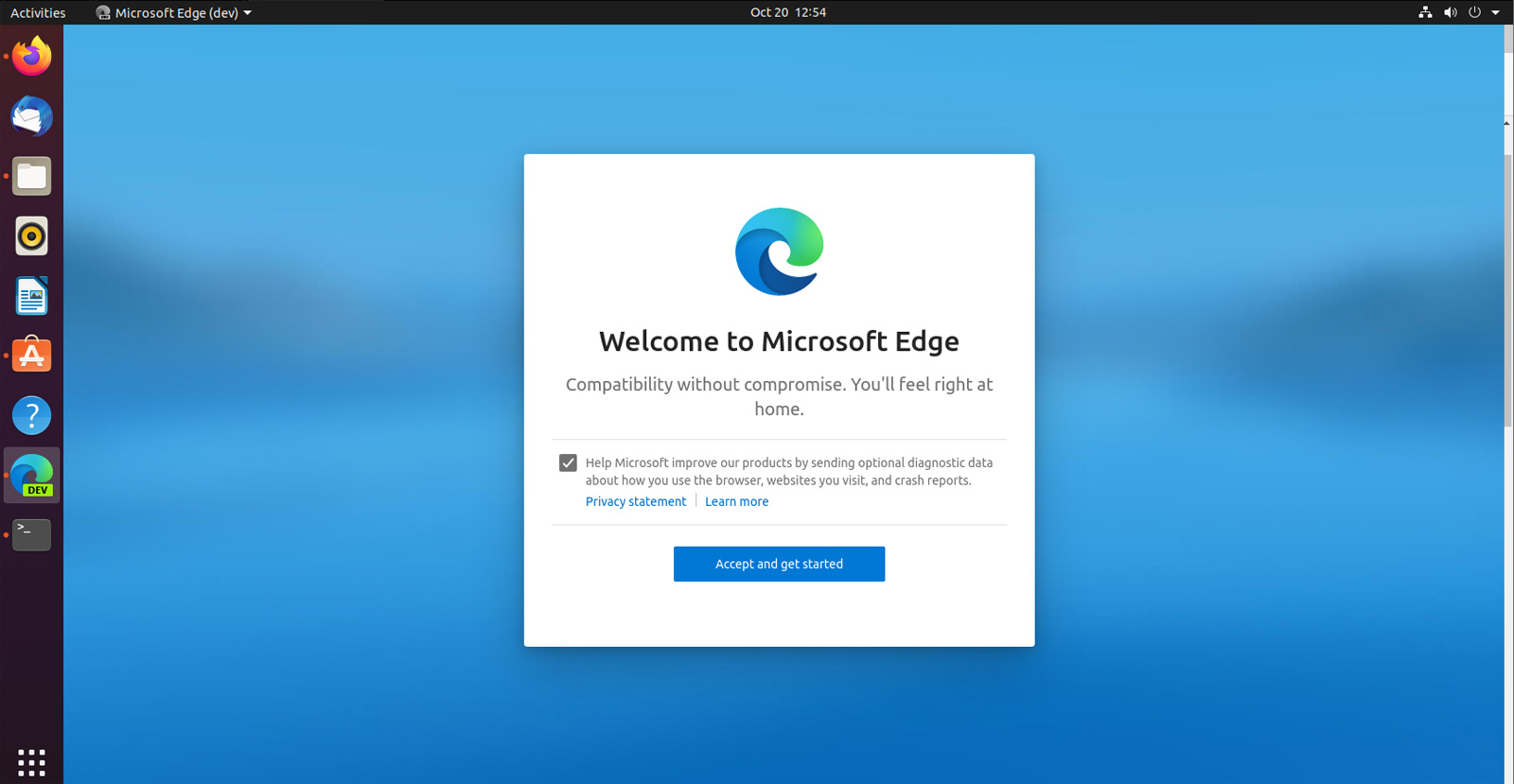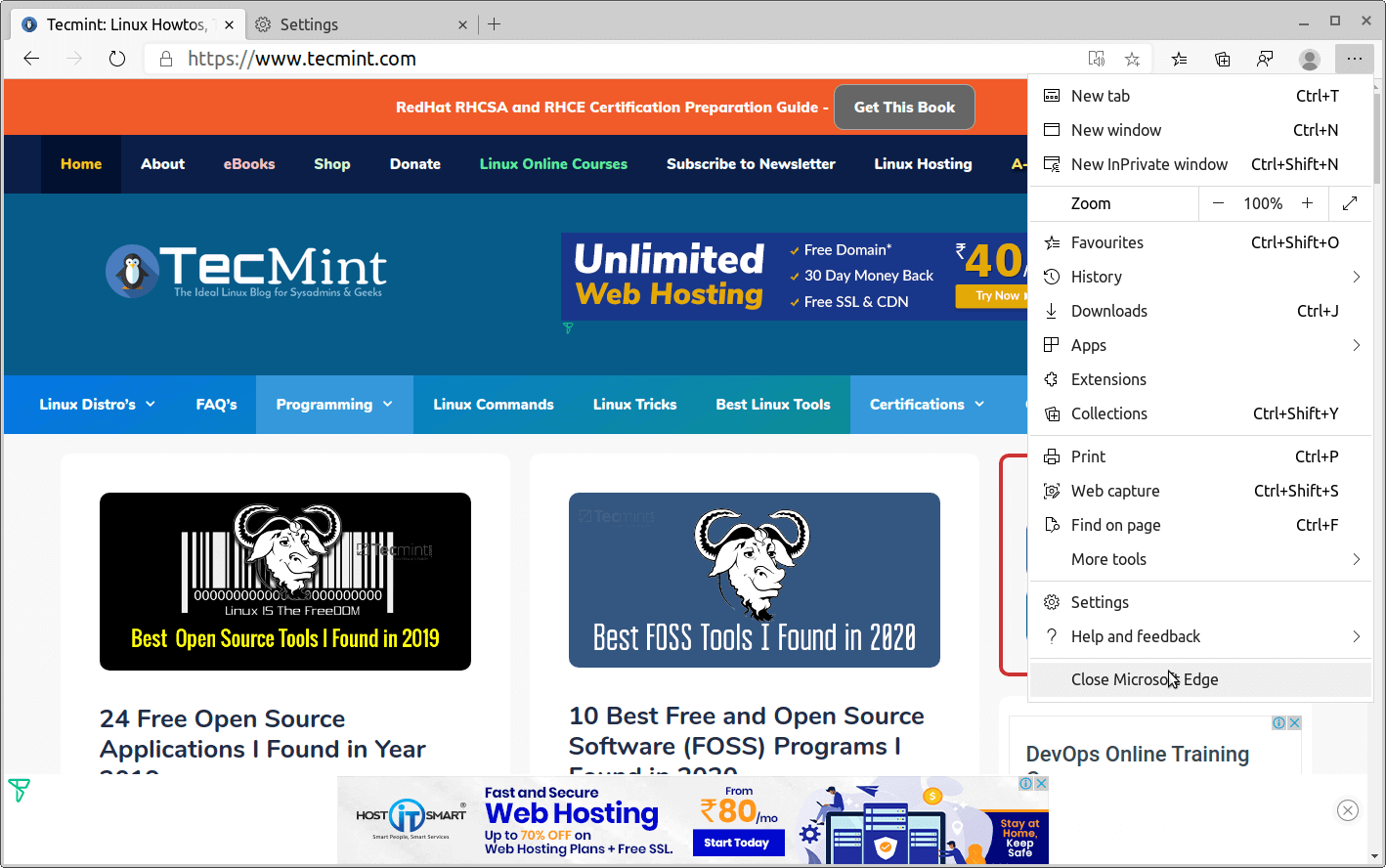We have seen a brief note about how to install the Microsoft Edge browser on Ubuntu. Unlike the internet, explorer Edge is Chromium-based. However, it does not support all of the extensions that Chrome offers because Edge is still in its infancy, and Microsoft has many plans to improve it.
It's no secret that we've been enthusiastic about Microsoft's new, Chromium-based Edge browser for a while now. But that enthusiasm has mostly been limited to 'a default Windows browser that doesn't suck,' rather than being for any particularly compelling set of features the new Edge brings to the browser ecosystem.- Installing Microsoft Edge on Linux There are two ways to get started with Microsoft Edge on Linux. The simplest approach is to download and install a.deb or.rpm package directly from the Microsoft Edge Insider site – this will configure your system to receive future automatic updates.
- The new Edge Browser has a clean user-interface and sleek design. Let’s check how to uninstall it from Ubuntu: How to Uninstall Microsoft Edge from Ubuntu 20.04. Through the following command, you will be able to uninstall Microsoft edge from the system.
In a folksy announcement this week, Microsoft politely declared its determination to step up our expectations from 'doesn't suck' to somewhere on the level of 'oh, wow.' Microsoft Corporate VP Liat Ben-Zur spent plenty of time enthusing about the way the new features are, apparently, already changing her life.
Edge Browser Ubuntu Download
Unfortunately, despite her use of the present tense, most of them aren't yet available—even on the Canary build on the Edge Insider channel.
Edge Collections
If you ever find yourself working with a bunch of loosely related websites for a particular task or project, Collections can help you keep it all together. We took the feature for a quick spin, and the utility was obvious—you can easily create and manage lists of websites, with thumbnails and easily readable titles.
The Collections button lives in the browser toolbar and looks like a pair of folders with a plus icon on them. When you click it, a right sidebar slides open, containing a list of any Collections you've already made. Clicking any collection brings it into focus, showing you a list of sites, with clear titles and thumbnails present. Site order in the collection can be managed by simply dragging and dropping, and an Add note button at the top allows you to insert rich text formatted note blocks as well.
Although Collections aren't yet generally available in the normal version of Edge, you can find them in both the Dev and Canary channels of Edge Insider.
Edge Immersive Reader

Immersive Reader Mode, accessed with an icon of an open book and speaker inside the address bar, isn't available on all webpages. For example, there was no Immersive Reader button on the Ars homepage—or my own author page. It was available on all the individual articles, however, and that's where I did most of my experimentation.
At first glance, Immersive Reader is reminiscent of Google's Amp project, which strips webpages down to the basics—consistently formatted text, and important images. Like Amp, the feature's not one hundred percent perfect—for example, although it displays the lede pic of a Focal Fossa on one of my recent Ubuntu articles, it hides away the screenshot galleries sprinkled through the article entirely.
AdvertisementBut there's a lot more to Immersive Reader than a basic stripped-down view. You can change text size and spacing on the fly, as well as choose from a fairly large selection of color schemes. Under 'Reading preferences,' Immersive Reader also offers a Line focus feature, which drastically dims out all but a few lines in the center of the page, as well as something called a 'Picture dictionary.' I found the line focus feature pretty obnoxious, and the picture dictionary was apparently broken—enabling it didn't seem to change anything on the page.
Grammar tools, in the next part of the Immersive Reader top menu, was much more interesting. This allows you to break all words on the page into component syllables and/or highlight all words of a particular part of speech—nouns, verbs, adjectives, or adverbs. If you're a fluent adult speaker of the language a page is written in, this is little more than a curiosity—but if you're trying to learn a new language, or have small children learning to read, the utility is obvious.
Finally, Immersive Reader mode offers a 'Read aloud' button. I was extremely impressed with how well-executed this feature was. The default voice—'Microsoft Jessa Online (Natural)'—is crisp, clear, and pleasant, with only enough artificiality to avoid the vocal version of the uncanny valley effect.

The reader highlights each word as it's spoken—making it as compelling for new and learning readers as for the disabled—and I didn't catch it mispronouncing anything, even in my own very technical articles. It fell back naturally to reading individual letters on unfamiliar technical terms (such as zsys), reading them in the natural, somewhat accelerated human pace an initialization normally would be.
Edge Browser Ubuntu Windows 10
If you aren't a fan of Microsoft Jessa, you've got 24 other choices, some of which are more natural-sounding than others. I found Microsoft XiaoXiao—a feminine Mainland Chinese voice—pretty charming. For the most part, XiaoXiao just read my articles in perfect English with a mild Chinese accent—but she read any numbers in the text in rapid-fire Mandarin.
Finally, you can adjust the speed of the reader—which is not only useful, it's just plain fun to play with for a little while. Adjusted all the way to the right, Jessa spat out paragraphs of technical data like Mac Lethal rapping about pancakes. Adjusted all the way to the left, she sounded unexpectedly inebriated. If you've never had a happily drunk robot read your own words back to you, I recommend the experience.
Immersive Reader, like Collections, isn't in the generally available version of Edge yet—but it is available in the Canary and Dev channels of Edge Insider, and it's well worth a look.
Vertical tabs
Vertical tabs is one of those features that make you grimace and ask yourself why you never thought of it. Simply put, the tab bar is on the left side instead of the top of the browser, with a fixed width per tab that allows plenty of room to distinguish which page is which.
AdvertisementIf you open more tabs than you have screen real estate for, you can scroll up and down through the list. Tabs can be clicked, dragged up and down in the list, and even multiple-selected to drag entire groups up and down in the list. There's nothing more to it than that—it's an obvious feature, that consumes available screen real estate in modern landscape displays in the most sensible way.
Linux users seeing this feature will have an even more visceral 'why didn't I think of that?!' reaction than most, since side-mounted desktop launchers have been de rigeur in Unity and Gnome for many years already, and for the same reasons.
Unfortunately, vertical tabs isn't available to the general public yet—not even in Canary or Dev builds.
Smart copy
There's not a whole lot to say about smart copy—simply put, it's a box-bounded, not text-bounded, copy operation that appears to preserve much more of the original HTML formatting, more cleanly, than we're used to.
Smart copy isn't available yet, so for now we're taking Ben-Zur's word for it. She tells us that smart copy should be showing up in Insider channels sometime next month.
Password Monitor, Tracking protection, and InPrivate enhancements

Password Monitor is another feature that isn't actually available yet. It's an opt-in service that will automatically hash any entry into a password field and check the hash against a cloud service that indexes known password dumps. If the hash of your password matches the hash of a known leaked password, Password Monitor pops up a warning dialog, and you're given a chance to see more information and choose a more secure password.
Edge Browser Windows 10
The new tracking protection will look immediately familiar to any Firefox users and follows a similar template. Tracker blocking can be set into basic, balanced, or strict modes. Users can set exceptions, change the blocking behavior when in InPrivate mode, and see a list of trackers that have been blocked. Even the Basic block setting—the most forgiving—blocks 'known harmful' trackers, although there's no immediately obvious definition of what makes Edge consider a tracker 'harmful' or benign.
The promised enhancements to InPrivate mode weren't clear at all in Monday's blog post—vague promises of InPrivate sessions and Web searches being deleted upon close and 'not being tied to me or my account' don't seem any different from the existing Private/InPrivate/Incognito modes we've been accustomed to in browsers for many years now.
High definition Netflix
If you watch a lot of Netflix on your Windows 10 PC, and you've got a 4K monitor and a banging surround system, you've just found your favorite Web browser—Microsoft has entered into a partnership with Netflix, and the streaming giant now offers 4K resolution, Dolby Audio, and Dolby Vision to Microsoft Edge—and only Microsoft Edge—on Windows 10.
If you're wondering why—apart from money changing hands—4K video would be available in one browser but not another, your guess is as good as mine. Still, if 4K Netflix on the PC is the killer feature you've been lusting after, now you've got at least one option available.

Ben-Zur says that this feature is available now.
